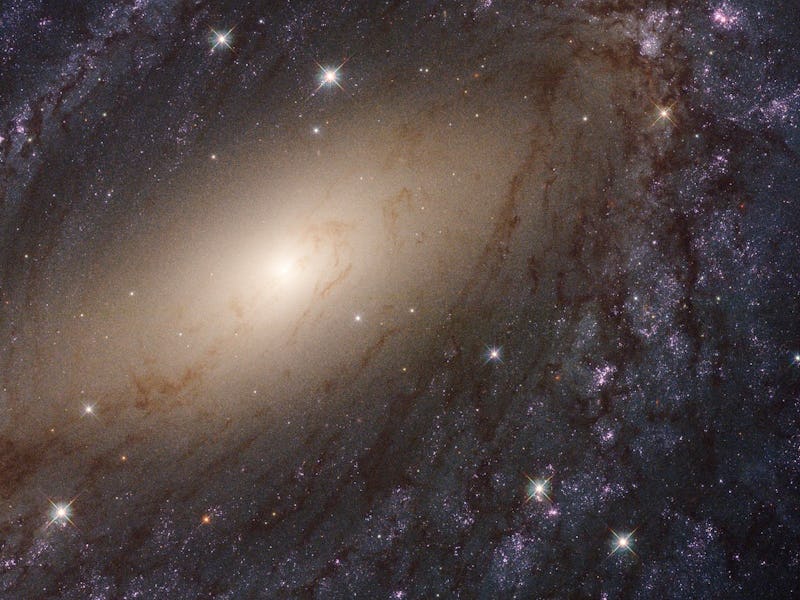New pictures from the Hubble Space Telescope give another view of the universe using both ultraviolet and visible light. What it shows is a tremendous amount of stars making up nearby galaxies and displaying a form similar to the Milky Way Galaxy.
A team of astronomers used Hubble to make composite images of two spiral galaxies NGC 6744 and NGC 3368, which are approximately 30 and 35 million light-years away, respectively. Using these images, researchers finished a survey called Legacy ExtraGalactic UV Survey (LEGUS) that looked at 50 local galaxies within 60 million light-years of Earth.
Join our private Dope Space Pics group on Facebook for more strange wonder.
Messier 96, also known as NGC 3368, that is 35 million light-years away.
The astronomers used ultraviolet light as it’s useful for finding young stars, which glow brightly in UV due to their heat. Galaxies for the survey were chosen based on their mass, star-formation rate, and their abundance of elements heavier than hydrogen and helium. The result was a catalog that had about 8,000 clusters and 39 million hot blue stars.
Besides serving as serious eye candy, these images can help scientists ascertain the reasons galaxies get their distinct shapes.
While Hubble was able to capture these amazing images, NASA’s James Webb Space Telescope — will be able to do even more when it launches in 2020. The new telescope, which has unfortunately been plagued by delays, will be able to scan distant regions in unprecedented detail.
Although the James Webb Space Telescope will be one of the most ambitious space telescopes ever created, NASA approved very early plans of a new telescope that can assemble itself in space.
